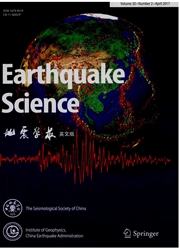

 中文摘要:
中文摘要:
观测的证据充分表明,印度-欧亚的缝合带雅鲁藏布江上存在自南向北的地壳俯冲带,它穿过莫霍面,深度大约达到100km.喜马拉雅中可能存在多重的地壳俯冲.它们有别于海洋碰撞时所产生的整个岩石圈俯冲.作者观测到雅鲁藏布江以北上地幔的板片构造,它可以解释为印度向欧亚俯冲时上地幔岩石圈的痕迹.它们说明与洋-陆的俯冲不同,印度向欧亚俯冲时,地壳与上地幔岩石圈出现拆层现象.综合现有的地壳上地幔构造,显示在不同地质年代中,印度与欧亚之间产生自南向北以及自北向南相反方向的俯冲,而且俯冲带周围出现某些速度异常区.
 英文摘要:
英文摘要:
Ample observational evidence shows that there is a northward crustal subduction zone underneath the Yarlung Zangbo suture between India and Eurasia. It penetrates Moho to a depth of about 100 km. There are probably multiple such crustal subductions under the Himalayas. They are different from lithosphere subduction during oceanic collisions. The detected slabs in the upper mantle north of the Yarlung Zangbo suture can be interpreted as remains of the Indian Plate's mantle lithosphere. In contrary to ocean-continent subduction, the mantle lithosphere is de- laminated from the crust as the Indian Plate subducts underneath Eurasia. Existing structural images of the crust and upper mantle of the Tibetan Plateau reveal that there were both northward and southward subductions over different geological period, causing some seismic velocity annmalies around those subduction zones.
 同期刊论文项目
同期刊论文项目
 同项目期刊论文
同项目期刊论文
 期刊信息
期刊信息
